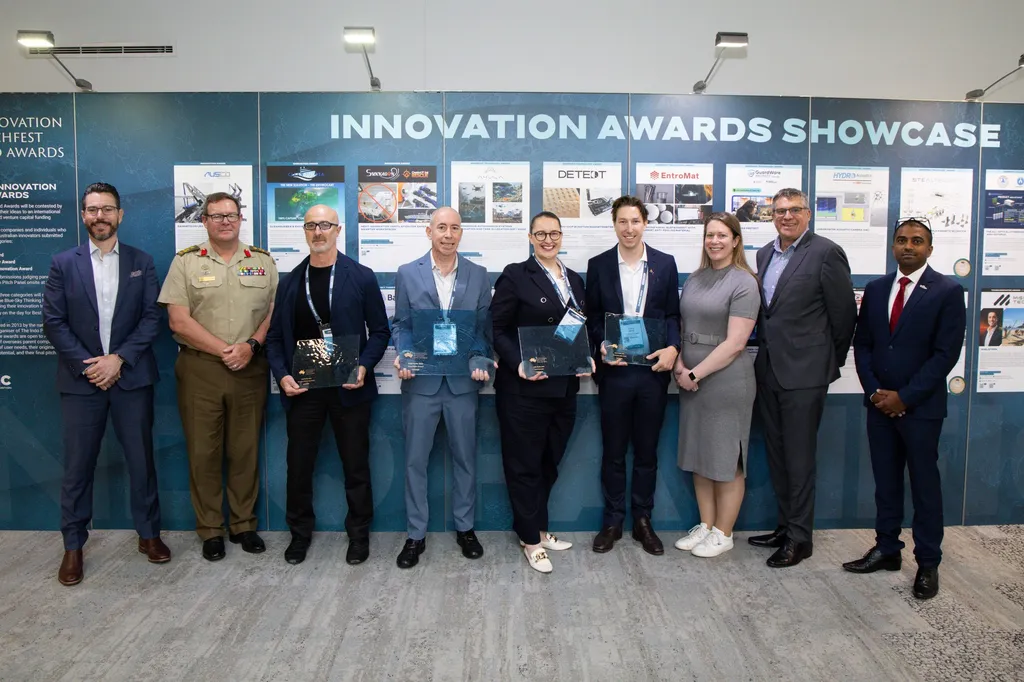One month on from the Discover Maritime Innovations 2025 (DMI2025) conference, the dust has settled, but the echoes of its impact linger. Hosted by the Maritime Engineering Research Centre (MERC) at the Hyatt Regency Sydney, the event wasn’t just another tech showcase. It was a watershed moment for Australia’s maritime sector, a gathering that crystallised a shared conviction: the next decade will be defined by electrification, autonomy, digital intelligence, renewable fuel alternatives, and a collaborative spirit not seen in generations.
The power of DMI2025 lay not in the ideas alone, but in the people who brought them to life. The room was packed with practitioners, engineers, shipbuilders, operators, technologists, academics, and innovators—those directly involved in building the solutions they spoke about. This wasn’t a conference of “what ifs,” but of “what’s next, and how soon?”
Setting the Tone: A Keynote Rooted in the Past, Focused on the Future
MERC Chair Angus McDonald opened the day with a keynote that traced the lineage of maritime innovation, from industrial pioneers like R.G. LeTourneau to Australian trailblazers such as Incat Tasmania. He highlighted the international leadership of Maritime CleanTech, showing that successful clusters emerge when industry, technology developers, and policy align with collective purpose. McDonald’s message was clear: innovation is not a destination but a culture, and history shows that the maritime sector advances when bold thinkers challenge prevailing norms.
Electrification: Technically Ready and Commercially Viable
Michael Eaglen of EV Maritime delivered one of the most valuable Innovation Talks of the day, providing a global overview of ferry electrification. His presentation showcased both the opportunities and the realities of deploying battery-electric vessels at fleet scale. The recent introduction of the EVM200 platform for Auckland Transport stands as a proof point that electrification is not a future ambition but an operational reality.
Ampcontrol’s detailed presentation on the electrification ecosystem reinforced this momentum. They discussed hybrid powertrains, MW-scale charging, battery systems, and modular power infrastructure capable of supporting vessels across multiple duty cycles. John Welsh from Ampcontrol demonstrated a 600 kW hybrid workboat platform and ruggedised charging systems, showing how system-level thinking is replacing piecemeal experimentation. The technical barriers to electrification are falling quickly, but the challenge of scaling infrastructure and accelerating adoption remains.
New Pathways for Decarbonisation: Renewable Fuels as Immediate Solutions
While electrification dominates future strategies, the maritime industry also needs technologies that decarbonise fleets now. Refuelling Solutions’ presentation by Cliff Kemmett delivered one of the day’s most pragmatic insights: renewable diesel, biodiesel, and other low-carbon liquid fuels can deliver significant emissions cuts today, without vessel modification. Their explanation of fuel standards, quality control, and the performance of HVO100 provided important nuance, reminding the sector that decarbonisation will be a portfolio of solutions, each appropriate to specific vessels, missions, and operational constraints.
Manufacturing the Future: Large-Format 3D Printing Comes of Age
Hyperion’s Joshua Wigley addressed a confronting yet inspiring topic: the decline of Australia’s small-vessel manufacturing capability. With the median age of marine trades rising, a shrinking workforce, and increasing offshore dependence, the sector faces structural challenges. Hyperion’s response is bold: Large-Format Additive Manufacturing (LFAM). Their containerised D3PLOY micro-factories can 3D-print hulls, components, and tooling at scale, in days rather than months. Case studies of printed hulls, subsea components, and docking cradles underscored the disruptive potential of this technology for defence, commercial, and recreational vessels alike. Hyperion framed the opportunity not just as a method of producing boats, but as a pathway to rebuilding sovereign capability. With the ability to print complex large components locally, using recycled marine polymers from decommissioned offshore assets, the future of boatbuilding may well be both circular and decentralised.
Data, AI, and Autonomy: The New Operating System of Maritime Work
The digital transformation of maritime operations was another defining theme. Tidetech and DeepSea demonstrated how route planning and AI-driven vessel optimisation can deliver major efficiencies. Their examples showed tangible fuel savings, such as 8,000–10,000 kg of CO₂e saved on short-sea voyages by optimising departure time, and significant gains from tidal-aware routing in constrained waters. DeepSea’s vessel-specific AI modelling underscored a critical point: generic optimisation tools are no longer enough. The future lies in dynamic, vessel-tailored models that continuously learn and improve.
Aut

